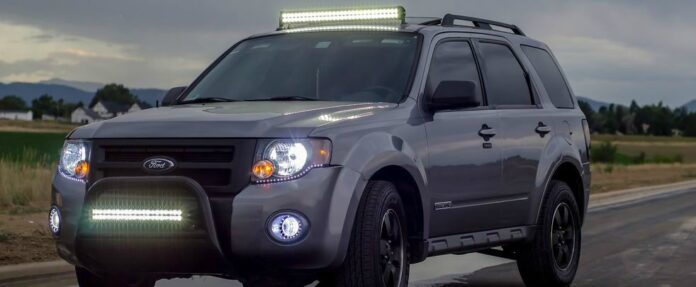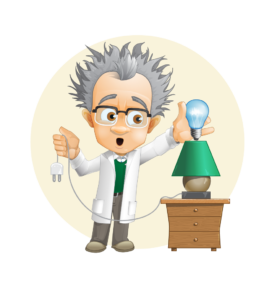Usually, when I talk about LED light bulbs, I focus on their luminary benefits—how they offer some of the most natural and most energy-efficient lighting solutions available today. However, I sometimes overlook the totally geek-out-worthy fact that LEDs are able to serve as communication points, too.
But . . . who cares?
I’m so glad you asked! One of the reasons this is so exciting for me (and you), is that LEDs—installed in streetlights, vehicle headlights, and street signs—could someday create an interactive and real-time network of devices that tells drivers everything they could need to know before (and during) their time on the road. LEDs will no longer just improve visibility for drivers at night; they may also improve driver safety with their network capabilities.
Cars Connect Through LED Lights
Automobiles can now be fitted with LED headlights instead of traditional halogen lights. As I’ve discussed in past articles, LEDs can allow for wireless communication via LiFi (not to be confused with WiFi). LiFi uses the visible light spectrum (VLC) to transmit data, transforming LED light into a sort of bridge between devices. So, if your car has LED headlights or taillights, you could soon be driving a mobile data-transmission node!
Multinational technology giant Intel has been conducting research and development with the VLC since 2008. Engineers are now working on a system that would use a series of rapid pulses of visible light to relay information from one car to another. The pulses would not be visible to the human eye but could relay information about traffic conditions. Such information would increase the data available for a semiautonomous or autonomous driving system. The system would have access not only to the information picked up by the vehicle itself, but to information from other cars on the road as well.
Communication Occurs over the Visible Light Spectrum
Because LED technology communicates over the visible light spectrum, communication is limited to line of sight (including reflection). This can be a drawback where inclement weather or ambient lighting can interfere with the LED pulses. But the drawback is also an advantage. Communication over the VLC means that your car will communicate with other cars nearby to recognize immediate (and oncoming) hazards. By contrast, radio frequency communication provides a lot of excess data or “noise” that can drown out the important information a driver needs to make a split-second decision and prevent an accident. So far, the United States has recorded over 19,000 traffic-related deaths in 2015 alone; LED technology could save lives by alerting drivers of dangerous situations before it’s too late.
 The Street Grid as a Giant Broadcasting Network
The Street Grid as a Giant Broadcasting Network
As I mentioned earlier, LED headlights can be used for more than just car-to-car communication. LED light bulbs are also being installed in equipment such as streetlights and traffic lights. So, in the future, your LED-lit car may not just be communicating with other cars, but also with a complex mesh of devices on the street grid! As LED light bulbs become more widespread and their technology continues to develop, they will not just help us see—they will give us the data we need to safely and consciously navigate the roads.
Real-World Impact—What Do You Think?
Do you think LiFi really help make our roads safer? Respond below…I would love to hear from you!




